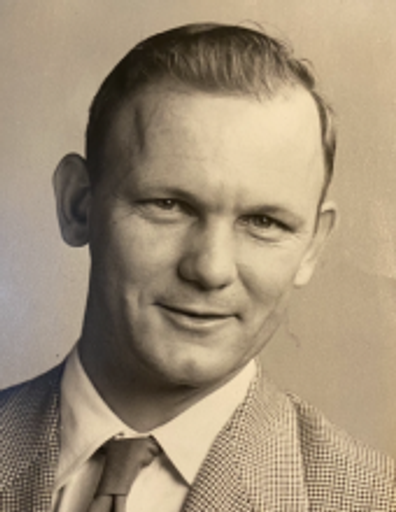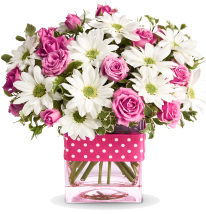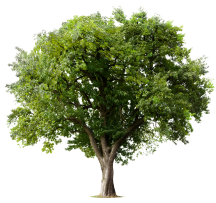May
06,
1923
06,
1923

September
30,
2020
30,
2020
Kenneth Wilfred Henry
May 6, 1923 – Sept. 30, 2020
Ken Henry loved the great outdoors, whether hiking trails in the Grand Tetons or watching the elk in his yard on the Duckabush River. He was a fisherman who once said, “Fishing is far more than catching the big ones.” He taught his children to row without making a splash.
He was a prankster, a philosopher, a poet, a craftsman whose intricate wooden boxes were given as gifts far and wide. He was a teacher, a National Park ranger, a freemason and a man of God whose goal in life was to “make the world a better place.” He loved cats.
Ken was a loving son and brother, husband, father, grandfather and great-grandfather. He counted his family among his greatest assets, next to his faith.
Kenneth Wilfred Henry was born May 6, 1923, on the family farm in Zanesfield, Ohio, second son of Frank M. Henry and Beulah Marie Baker Henry of Bellefontaine.
Ken was named after the doctor (Kenneth Sneary, MD) who traveled through a late spring snowstorm to deliver him. Ken’s parents didn’t immediately have the money to pay the doctor’s fee, so he accepted instead a shoat or young pig. The doctor joked that he got the best of the bargain “a 40-pound pig for an eight-pound boy.”
An Ohio Farm Boy
Ken recalled how he and his brothers — Byron, the eldest, Harold and George —helped the family work the farm. “We all spent many happy hours there,” he wrote. “During the lean years, we all pitched in and helped paint houses and raise vegetables to sell during the summer. We learned to take pleasure in doing a task, whatever it might be.”
He recalled the whole family tapping sugar maple trees in early spring on the farm. He wrote about how he and his brothers had the job of breaking ice off the watering trough and shelling corn kernels with a hand-cranked machine for the chickens’ feed. There often followed wild “cob wars” in the tractor barn.
The Henry boys’ childhood was full of fun and mischief. Ken recounted how he once tried to slip out of church through a window. His dad, serving as an usher, saw him from the back of the church and the rest can be easily imagined.
His dad was a biology teacher, giving the boys an interest in natural sciences. “We were all avid fishermen and hunters, deriving more pleasure from the simple things of life than the expensive,” Ken wrote. “In school I excelled in any subject connected with nature or science from the first grade on through.”
Ken had many friends and was well-liked, according to Alice Ann Pruett of Bellefontaine, Ohio, who knew him from junior high and high school. He received above average grades according to his own memoirs. He was inducted into the National Honor Society, and participated in drama, Boy Scouts and Hi-Y, a youth group of the YMCA.
“I participated in football, basketball and track, but my size was a handicap,” wrote Ken, who was five-foot, eight-inches and around 130 pounds in his prime. “I took up boxing and won the Golden Gloves District Championship. A broken nose prevented further participation.”
Ken graduated from Bellefontaine High School in 1941. He had considered becoming a minister but finances and other considerations led him to spend a year working in a bakery, a lithographer’s lab and on a farm. He moved with his family to Michigan and enrolled in Ford trade school in Dearborn.
The War Years
In 1942, as the U.S. was drawn into World War II, Ken became a hydraulic maintenance apprentice at the Ford Motor Company’s Willow Run aircraft bomber plant near Ypsilanti, Mich. Set to be drafted, he joined the Army Air Corps Jan. 25, 1943.
Ken, with his sights set on becoming a pilot, took preliminary training in Vermont and pre-flight training at Maxwell Air Force Base in Alabama. His basic flight training was at Courtland Army Airfield in Alabama. There he logged 65 hours of flying, including more than 35 hours of solo flight.
Ken began courting Frances Jane Allen early in 1942, according to her records. Fran’s photo and keepsake scrapbook from the war years documents their marriage, May 13, 1944, at Courtland Army Airfield post chapel, through multiple deployments in various states, her favorite being Colorado because of the outdoor adventures and breathtaking sights.
Ken was unable to complete flight training because, by his account, the altitude affected his hearing, resulting in a 40% lifelong hearing loss. In other family accounts, there was a one-time human error involved in decompression, resulting in injury to multiple people including Ken.
Ken transferred to Scott Field Air Force Base in Illinois, where he trained as a radar operator. A clipping from Fran’s scrapbook notes the momentous victory over Japanese forces that signaled the official end of WWII on Aug. 15, 1945. Pfc. Henry, then a radio operator-mechanic, was honorably discharged from military service Feb. 18, 1946.
Starting a Family, Finding a Career
Ken briefly studied engineering at Michigan State Normal College before switching to pursue a degree in forestry at the University of Michigan. Daughter Joyce was born Feb. 4, 1948. During this period, Ken was going to school and working a full-time night shift at the university hospital’s maintenance room where, among other duties, he sharpened hypodermic needles. He graduated June 11, 1949.
Ken worked for less than a year as a farm planner for the Soil Conservation Service in Kentucky but got push-back from the locals that “no damn Yankee” was going to give them direction. The family moved to Ohio in March 1950, where Ken got a job for a lumber company in drafting and sales.
Daughter Julie, born in Kentucky Jan. 10, 1950, died a year later from complications of accidental exposure to carbon monoxide while she was in the womb.
In the early 1950s, Ken worked various jobs as a press operator in a motor plant, a tree trimmer, a farmhand and a grounds maintenance/fireman for the University of Michigan.
“Moving from house to house in my early years while you figured out how to make a better life for our family taught me flexibility and how to survive always being the new kid on the block,” Joyce wrote in a letter to her Dad after his death.
Son Michael was born Feb. 23, 1953. Around that time, Ken decided to pursue a teaching career. “Often I have thought of becoming a teacher and following in my father’s footsteps,” he wrote in a college essay. “This I hope is the beginning of a new era in my life.”
“An Undying Faith in God”
Asked to name his assets and liabilities, Ken wrote, “For the purpose of this writing, I believe my greatest assets are an undying faith in God with a will to help in His work of making the world a better place to live in.” This aspiration would continue throughout his life.
Next came his family. “My wife and two children make me feel like I’m the greatest guy in the world, and they really believe it themselves sometimes,” he wrote.
Ken’s biggest liability, by his reckoning, was lack of self-confidence, which he attributed to his hearing loss. He had a vision to champion the underdog having been challenged himself. He was also a daydreamer, he admitted, often curiously pondering the possibilities of life and losing focus on the task at hand.
Ken and Fran welcomed daughter Barbara on May 7, 1958. Barb grew up to be an accomplished violinist and music teacher in schools around the world. She appreciates “the fact that he supported my music education even though he couldn’t really hear the result.”
Ken completed his master’s in education at the University of Michigan in August 1958. He taught fifth grade in Ann Arbor and junior high in Grand Haven. Ken was a science teacher and later an audiovisual instructor. He was active in Boy Scouts and led extracurricular activities, such as rocket club.
Ken was notorious in the teacher’s lounge, Mike says. He once put an explosive power from the science lab in an ashtray and waited for someone to stub out a cigarette. The result was he had to buy new work shirts and ties for several of his fellow teachers.
Teton Summers and Moving to Montana
Every summer Ken hunted for work, like painting houses, to supplement his teacher’s salary. But in 1966, he found “the ideal summer employment” as a ranger-naturalist in Grand Teton National Park. “This provided my family with an incomparable vacation and I could earn an income doing what I enjoy most, helping people,” he wrote.
Summers in the park created many memories for the Henry family.
“You shared your love of nature with me and taught me to appreciate the beauty in this world...sunrises, sunsets, mountains and rivers,” Joyce wrote in a memorial to her Dad. “You put the worms on my hook and took the fish off. I will always remember our moonlight walks at midnight. Fun memories.”
Mike recalls many “classic Henry adventures,” like the time they were fishing on Lewis Lake in Yellowstone National Park. On the way home, Ken hooked “one of the biggest trout he’d ever caught in his life” on a very small fly. The ensuing battle lasted until after dark.
“We had no idea where we were, no compass, no lights,” Mike said.
They finally bumped (literally) into a familiar shoreline. Ken suggested Mike get out and walk along the road, calling out to his Dad in the boat to direct the way. For some unfathomable Henry logic, Mike had been given the backpack of fish to carry, and all he could think of was meeting a hungry bear.
Joyce learned from her Dad a sense of adventure and “No fear of taking a risk.” He modeled generosity, often inviting “every Tom, Dick and Harry” home for dinner on a moment’s notice, with Fran graciously doing the culinary pivot.
“You told me I could do anything and be anything that I put my mind to. And I believed you,” Joyce wrote. “From you I learned to live by the Golden Rule and to have faith in something bigger than myself.”
The family moved in 1968 to Helena, Montana, where Ken taught adult education (a position that was truly his forte). He also was director of the instructional materials center for Helena Public Schools.
Ken and Fran enjoyed traveling and hiking in the mountain ranges of Montana and Wyoming. He retired in 1985 and they moved to Washington State where Mike and Barb lived. Fran died Nov. 9, 1992, of cancer.
A Lifelong Freemason
Ken was member of the Masons from the time he was a young man. As he moved from Michigan to Montana and later to Washington State, he participated in local lodge activities and held many leadership roles.
It was through the Masons that he met Sandra K. Naddeo. Widowed like Ken, she was interested in joining the Belfair Chapter of the Order of the Eastern Star, a Mason-affiliated group open to both men and women. Since both lived in the same mobile home park, the group’s worthy matron suggested Ken take her to a meeting.
“I thought he would just drop me at the meeting, visit with his friends and then drive me home,” Sandy said. “Instead, he stayed by me all during the meeting and refreshments afterward, and then took me home. The next day I came home from work to find a bouquet of flowers on my porch with a note 'When can we meet again?' And that's how it started.”
He proposed to her as she was flying down to Arizona to join him on a road trip. As her plane was circling Phoenix, the pilot came on the intercom and said he had an announcement for one of the passengers, proceeding to relay Ken’s proposal of marriage. Sandy was moved up to first class and given a bottle of champagne and two glasses. Ken was waiting in the terminal with a ring. Sandy felt a bit embarrassed but also “delighted and touched.”
They were married on Feb. 20, 1993, in Mason County in the Belfair Masonic Lodge. He always joked they married on her birthday so he wouldn’t forget either.
He Enjoyed Life
The Henrys traveled to Montana several times to see old friends and “places that were special to him,” Sandy said. They also went to Michigan and Ohio to spend time with his brothers and their families, touring Amish Country and creating other fun memories.
“Ken was fun to be with, enjoyed life, delighted in so much, loved people, loved seeing things, loved the travel and was a joy to be with,” Sandy said.
Among other road trips, they traveled to California to visit Sandy’s son Tedd, and on the way back ditched a congested Highway 101 taking a scenic route to I-5. “We didn't know where we were, there wasn't much to see but we were on a mission,” Sandy said. “It was crazy and fun.”
One day Sandy called Ken from work to tell him it had been a hard day and she just wanted to quit. “When I came home and opened the door, Ken was standing there with nothing on but a bow tie from his tuxedo and two glasses of wine in his hands,” she said. “I had to laugh. It sure brought everything into perspective.”
Once he surprised her by washing and waxing her old Chevy truck while she was at work. She was delighted until she discovered he’d only cleaned one side — the side she’d see when she drove up.
Another time they were looking for the property lines on their five-acre Belfair parcel. “He had the compass and directed me and I bushwhacked my way through brush and tangles and blackberry bushes at his direction.” Her path led right to the marker.
“I was really sore but very proud of him. It was only years later when I was telling the story to someone else that he admitted that he had gotten out the day before and had already found the marker!”
Life on the Duckabush
Ken and Sandy bought an A-frame cabin on the south side of the Duckabush River in Brinnon as a getaway, later moving to the north side of the river into the doublewide trailer with wrap-around porch that the Henrys would call home for the remainder of their years together.
After Sandy retired, they stayed busy with Eastern Star, Amaranth, church, work around the home, family and travel.
Ken documented life on the Duckabush and his life memories in a journal that was a gift from Sandy with entries dated from 1996 through 2006. He loved nothing better than sitting on the porch with a cup of coffee watching the parade of elk through their yard. Kingfishers, herons, eagles, otters and the seasonal run of salmon were all part of the daily “show.”
On Jan. 4, 2006, he wrote, “Livin’ on the river don’t get no better than this. Woke up this morning with a large herd of elk grazing its way across our front yard. There were 80-100 of the beautiful animals munching away at our hydrangeas and other shrubs.” His brother Harold joked that Ken ought to herd them into the garage, close the garage door and go on a shooting spree to have meat for the freezer!
The cats were an ever-present source of joy to Ken, who had fond feline memories from his farm days. Their first cat Sissy came from a garage sale. She had a “free” sticker on the top of her head. Ken cajoled Sandy into taking her home. Later came Tramp, Minnie Moe and Oscar.
In his diary, the cats were blamed for shaky scribbles and spilled coffee … also for idle time not doing chores or working in his shop. On Jan. 5, 2006, he wrote, “Yesterday’s cat intervention led to a whole new line of endeavor and complete loss of a day’s recorded adventure.”
In recent years, as his health diminished, Ken spent more and more time in his recliner with a warm cat on his lap, looking out the window at the river. Sandy attended to him faithfully, providing for his every need. They still found ways to make each other laugh.
He was hospitalized at least twice during the pandemic with complications of his failing health. Miraculously, he did not get COVID-19 and thanks to Sandy’s dedicated care and devotion, was discharged home, the last time in September 2020.
Ken died at home on the Duckabush Sept. 30, 2020, at age 97.
Ken was preceded in death by his mother and father; wife Fran; brothers Byron and George, sister-in-law Helyn Henry; infant sister Julia, born after Byron, who died at birth; and daughter Julie.
His survivors include wife Sandra, brother Harold (Pinky), sister-in-law Lois Henry; children Joyce Meade, Mike (Chris) Henry, and Barbara Henry; Sandy’s children Andy (Heather) Pitts, Tedd (Amber) Pitts, and Sheri K. (James) Whitfield; grandchildren Beth, Paul, Laura, Alex, Rose, Daniel, Montana, Julie, Caitlynn, Kimberly and Brett; 13 great-grandchildren; nieces, nephews and other family members by blood and love.
Among his papers is a sealed envelope postmarked in 2006 and addressed to Kenneth Henry in Sandy’s handwriting. It’s labeled “game invented by Ken.” Anybody want to play?
To order memorial trees or send flowers to the family in memory of Kenneth Wilfred Henry, please visit our flower store.




